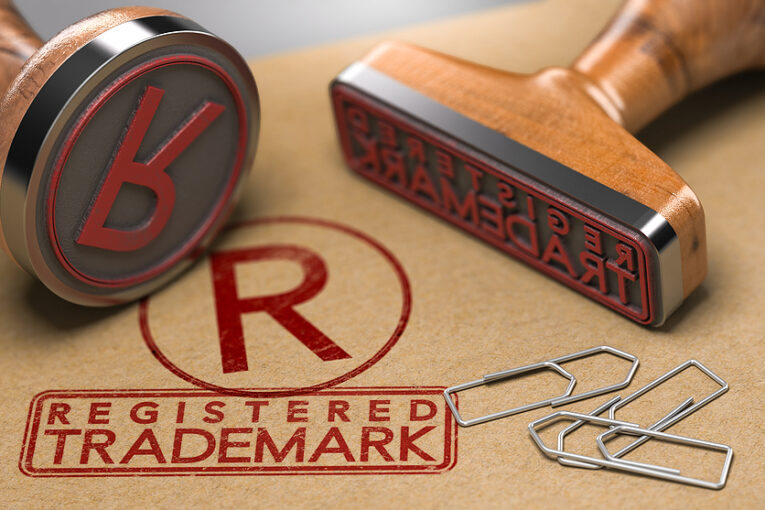Trademarks constitute crucial identity-defining assets for companies seeking to build enduring brand recognition. However, these invaluable business tools also frequently become the subject of intense disputes between trademark holders and challenging parties. Fully understanding the ever-shifting landscape of trademark conflicts is a key prerequisite for companies aiming to securely safeguard intellectual property in a dynamically complex legal and commercial environment.
Laying the Vital Groundwork: Trademark Clearance and Monitoring
Prior to officially adopting a trademark, conducting comprehensive clearance research represents an absolutely essential first step. This due diligence encompasses thoroughly searching relevant databases in order to uncover any potentially conflicting preexisting marks. Failure to properly investigate and clear a contemplated trademark can precipitously set the stage for future disputes down the line with justifiably aggrieved businesses.
Prudently working with qualified trademark attorneys to perform appropriately detailed clearance searches constitutes best practices for fully assessing the risks of infringement issues emerging. Discovering and addressing any substantive conflicts early in the process provides a golden window of opportunity for averting legal headaches before they arise.
However, the hard work of trademark owners cannot end at the mere clearance stage if ongoing protection is the end goal. Establishing consistent ongoing monitoring allows businesses to respond with alacrity to newly emergent threats in a dynamic commercial landscape. Diligently watching both domestic and international trademark filings and registrations allows companies to flag any concerning new applications early on. This facilitates rapid response actions like filing oppositions or cancellations when legally warranted.
In essence, diligent advanced clearance efforts followed by vigilant monitoring together represent a potent one-two punch for proactively fending off potential trademark disputes before they metastasize into legal liabilities.
Grounds for Refusal: Descriptiveness, Confusion and Beyond
In the trademark registration process, applicants may encounter various grounds for refusal that can thwart their hopes of successfully registering a contemplated mark. Familiarizing companies with bases for rejection better prepares trademark owners to consider defensive strategies. Among the most common grounds for refusal are:
- Likelihood of confusion with existing registered marks or pending applications that share substantive similarities. Confusion liability leaves businesses legally vulnerable.
- Use of purported trademarks that incorporate immoral, scandalous, or deceptive language, images, or connotations. Marks viewed as socially offensive face barriers to registration.
- Determination that a proposed mark is overly descriptive of associated goods and services without sufficiently established distinctiveness. Descriptiveness deficiencies can sometimes be overcome by demonstrating that extensive commercial usage has imbued consumer recognition of the mark’s source-identifying distinctiveness.
- Attempts to register primarily merely well-known surnames as trademarks without indications that the surname has acquired meaning beyond identifying persons with that familial name. Surname marks often face distinctiveness challenges.
- Using common geographic terms to describe where a product comes from in trademarks that do not include any clues about those terms has gone beyond their original geographic meaning and now has a source-identifying uniqueness that is tied directly to applicants’ goods.
Thoroughly researching proposed trademarks using appropriately comprehensive searches helps uncover points of conflict with existing brands, thereby avoiding refusing grounds centered around confusion liabilities. If you are refused because of something else, like a name that is too descriptive or a primary surname that is important, you may be able to get it overturned by showing proof that you have become unique through heavy use in business. Of course, sometimes refusal grounds may remain unsatisfied, sinking hopes for registration.
Fashion Forward: Navigating Industry-Specific Challenges in Trademark Disputes
The notoriously innovation-driven fashion industry relies tremendously on securing trademarks to protect brand identities. However, trademark-centered fashion disputes surface certain distinct challenges:
- The breakneck speed of style changes within fashion markets quickly renders once-popular designs out of fashion. The distinctive nature of designs complicates arguments about confusion.
- Pursuing protection across global fashion markets introduces complexities around requirements for international trademark registration in multiple jurisdictions with disparate legal standards.
- The frequent ephemeral uniqueness of stylistic innovations leaves fashion creations highly vulnerable to fast-following copycats and knockoffs. Imitators exploit the narrow windows to mimic designs between runway debuts and market pivots.
In light of these singular challenges within the fashion space, brands pursue multifaceted intellectual property protection strategies:
- Registering logos, symbols, iconography, and brand names as trademarks to preserve brand recognition and tie tags to company goodwill.
- Seeking additional safeguards like design patents temporarily protecting ornamental elements or copyrights covering original creative expressions.
- Building and zealously guarding strong brand recognition and customer loyalty as competitive buffers against infringers attempting to siphon market share. Maintaining brand identity integrity remains imperative.
- Aggressively enforcing intellectual property rights through all legal means against brazen design infringers. Fashion icons cannot tolerate knock-off imitations.
Despite the imposing obstacles posed by their hyper-competitive nature, trademarks still constitute the most widely utilized and enforceable type of long-term fashion brand protection.
From Small Businesses to Tech Juggernauts: Diverse Trademark Dispute Examples
Trademark-centered disputes have impacted companies spanning the full spectrum of sizes and industries. Reviewing high-level trademark disputes examples illustrates the broad reach of trademark conflicts.
- Global beverage behemoth PepsiCo prevailed in a heated dispute against upstart Rise Brewing Co. over the branding of its nascent “MTN DEW RISE” citrus-flavored caffeine-infused drink line. PepsiCo alleged likelihood of confusion with Rise’s existing Rise Nitro Cold Brew Coffee brand.
- Symbolic tech giant Apple paid out a weighty $60 million settlement to resolve iPad trademark litigation in China. Chinese company Proview Technology argued they rightfully owned iPad name rights associated with the iconic tablet computing devices.
- Coffee kingpin Starbucks aggressively sued a tiny local coffee shop dubiously dubbed “HaidaBucks” over perceived infringement. The disparity in business scale highlighted how trademark disputes permeate both small and big companies.
- Esteemed international auto manufacturer Volkswagen succeeded in legally compelling an Australian church organization to cease and desist from utilizing the Volkswagen name and associated marks. Volkswagen asserted that the spiritual healing services created brand dilution confusion.
- Toy titans Mattel and MGA Entertainment (the makers of Bratz dolls) fiercely sparred in protracted court battles over perceived design similarities between the iconic Barbie and Bratz brands. Highly profitable toy industry success heavily depends on zealously guarding trademark rights.
The selected cases showcase that even globe-spanning corporate giants can unexpectedly stumble into thorny trademark dispute entanglements over branding choices lacking adequate diligence. Maintaining the utmost diligence around trademarks remains imperative for companies seeking conflict avoidance, regardless of organizational size or industry sector.
Digital Age Dilemmas: Social Media and Beyond
The ongoing digitization of commerce introduces evolving new trademark complications as additional business activities migrate online:
- Bitter arch-rival tech innovators Apple and Samsung stoked heated global smartphone patent and trademark design lawsuits, underscoring the rapidly escalating monetary values tied to industrial design rights in hotly contested mobile device markets.
- Insurance and financial services giant MetLife’s lengthy usage of iconic Peanuts cartoon beagle Snoopy characters in national advertising campaigns eventually drew the ire of Peanuts publisher Peanuts Worldwide for creating alleged brand confusion. This reflected sensitivities around nostalgic branding.
- Coffee retail chain leader Starbucks aggressively sued tiny New Hampshire coffee shop Black Bear Micro Roastery over its pun-derived “Charbucks brand infringement” and confusion. However, the courtroom ultimately protected the punny moniker as permissible—a non-confusing parody. This demonstrated limits to trademark overreach against humorous, expressive usage.
- National Football League team Washington Redskins faced successful long-running trademark infringement litigation, resulting in cancellation of the team’s trademarks. Native American challengers asserted the trademarks constituted intolerable racial offensiveness against indigenous peoples. This reflected modern sensitivities around trademarks and cultural representation.
As brand visibility and access to companies continue to expand through digital channels, trademark disputes will likely only intensify in the online sphere. Social media introduces more opportunities for brand criticism Going forward. Companies must watch emerging spaces.
From Fashion Runways to Countersuits: High-Stakes Trademark Cases and Outcomes
While many trademark disputes reach settlements, some escalated high-profile cases manage to fight their way to nuanced courtroom conclusions with mixed results:
- Iconic luxury footwear designer Christian Louboutin defended its signature red-lacquered shoe soles as warranting special fashion trademark protection. Relief ultimately protected Louboutin’s red soles only in contexts displaying color contrast between soles and upper shoes. Competitors gained leeway to potentially use red soles on monochrome red shoes without necessarily infringing.
- An Indian restaurant daringly named McCurry raised McDonald’s corporate ire but eventually rebranded after the court largely sided with McDonald’s complaint. Judges felt name choice created significant customer confusion despite McCurry’s defense of the name as an innocuous portmanteau of “Mc” and “curry.”
- Major fashion retailer Urban Outfitters ultimately willingly ceased usage of “Navajo” tribal references on its clothing products following intense pressure over concerns of unlawful cultural appropriation and insufficient respect for indigenous intellectual property rights.
- Iconic luxury watchmaker Rolex successfully sued a notorious counterfeit dealer in a years-long legal battle, ultimately awarding substantial damages to Rolex and permanently barring the dealer from unlawfully trading fake watches mimicking Rolex’s signature protected aesthetic designs. This outcome reinforced legal consequences for brazen counterfeit activities, even when attempting to skirt intellectual property enforcement.
The sample case resolutions demonstrate judges often aim to strike delicate balances between vigorously protecting legitimate trademark rights and weighing other complex legal principles like free expression interests. Nonetheless, with huge financial sums and brands’ future prospects at stake, even mixed judicial outcomes can still shake industries dependent on trademarks as foundations for success.
In conclusion, today’s trademark disputes span a vast spectrum, ranging from minor clearance oversights spontaneously sparking conflicts to high-stakes licensing disagreements escalating into eruptive litigation. Trademarks’ increasing monetary values pressure companies to proactively establish enforcement regimes built to defend these crucial assets.
Heeding best practices around diligent clearance searches, vigilant monitoring of priority marks, and sobering competitive intelligence can help enterprises preventably avoid certain pitfalls. Still, given the exponential complexity of evolving global digital markets, even the most cautious brand custodians will likely encounter some trademark disputes. Resolving these inevitable conflicts demands the decisive execution of multi pronged strategies: pursuing quick settlements where warranted, aggressively filing oppositions against dangerous mark applications, litigating infringement cases when viable, and navigating appeals as needed.
With swelling e-commerce bringing soaring trademark valuations but also more brand visibility and imitation opportunities, companies must remain highly vigilant. Only through an expertise-backed commitment to understand intricate legal landscapes and respond firmly against disputes can enterprises safeguard trademarks’ integral contributions to commercial success. Legal, branding, and technical experts must navigate the choppy waters of trademark protection while working in unison to maintain brands’ market viability through securing identity integrity. Staying on this demanding course enables avoiding or overcoming disputes.





